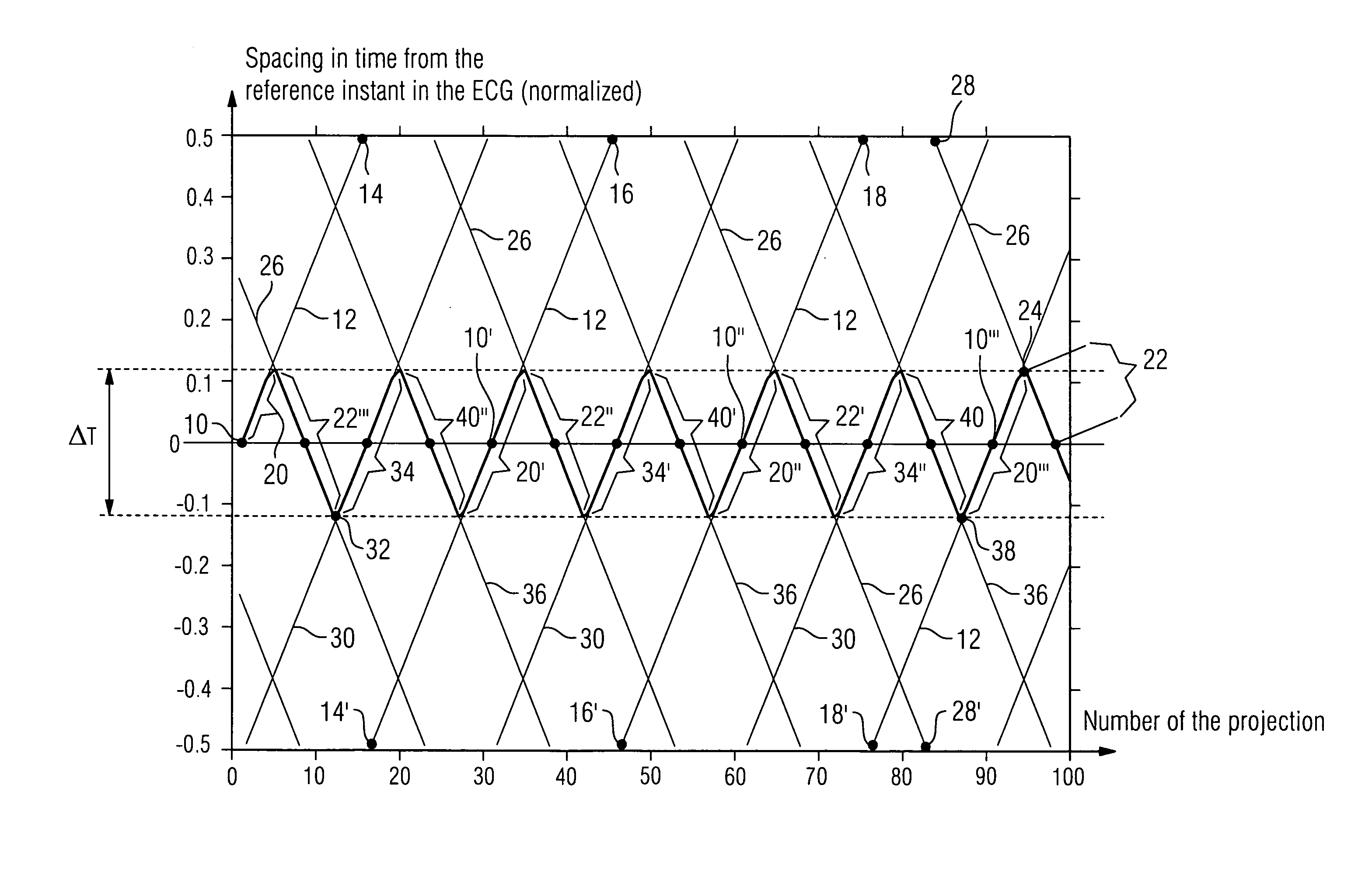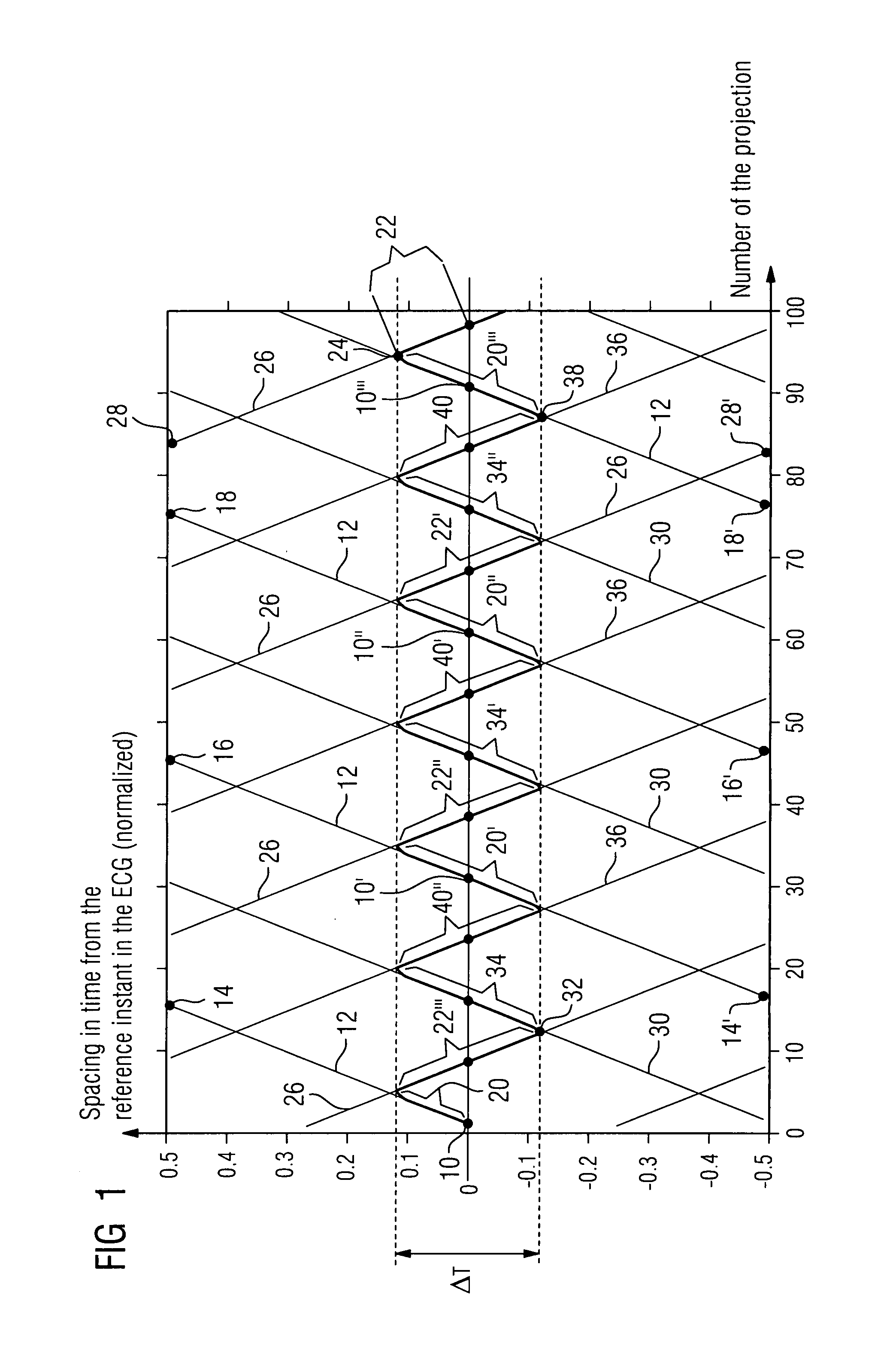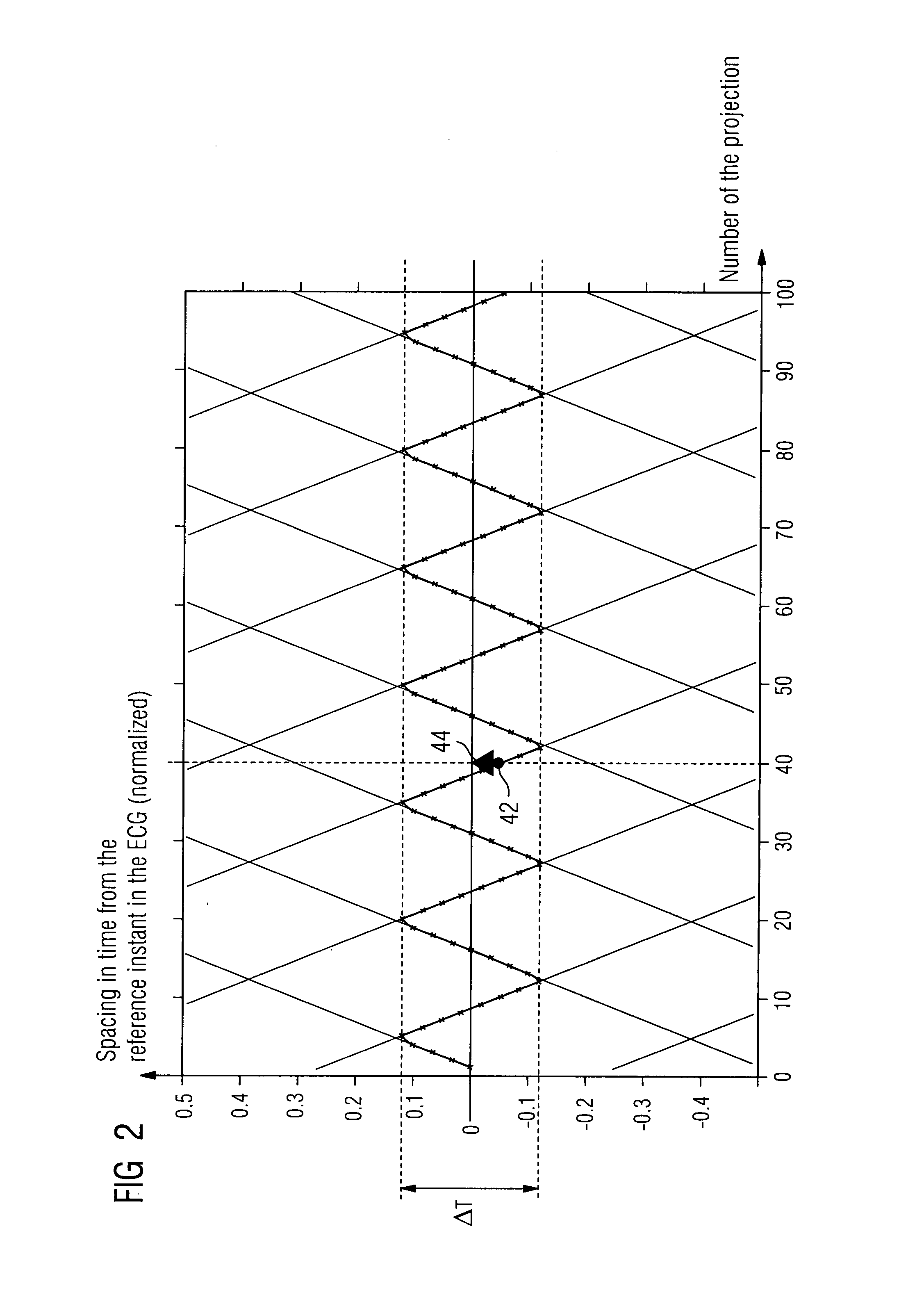Method for providing a 3D X-ray image dataset of a patient's heart
- Summary
- Abstract
- Description
- Claims
- Application Information
AI Technical Summary
Benefits of technology
Problems solved by technology
Method used
Image
Examples
Embodiment Construction
[0042]Assume that a patient is located in a manner known per se in a C-arm X-ray system. Attached at opposite points to the X-ray C-arm are an X-ray source and an X-ray detector. The X-ray C-arm can be moved to well-defined angular positions. An image from a specific angular position is referred to as a “projection”. The projections are in FIG. 1 counted successively along the x-axis. An electrocardiogram is taken of the patient. The regular heartbeat results, as is known, in regular structures in the electrocardiogram. A reference structure can be determined within each period and a cardiac phase determined in relation to said reference structure. The cardiac phase is the spacing in time from the respective reference instant which the reference structure has. Said spacing is in FIG. 1 plotted on the y-axis. The spacing in time between two such reference instants has here been normalized at “1”. If the spacing in time is in each case measured relative to the closest reference instan...
PUM
 Login to View More
Login to View More Abstract
Description
Claims
Application Information
 Login to View More
Login to View More - R&D
- Intellectual Property
- Life Sciences
- Materials
- Tech Scout
- Unparalleled Data Quality
- Higher Quality Content
- 60% Fewer Hallucinations
Browse by: Latest US Patents, China's latest patents, Technical Efficacy Thesaurus, Application Domain, Technology Topic, Popular Technical Reports.
© 2025 PatSnap. All rights reserved.Legal|Privacy policy|Modern Slavery Act Transparency Statement|Sitemap|About US| Contact US: help@patsnap.com



